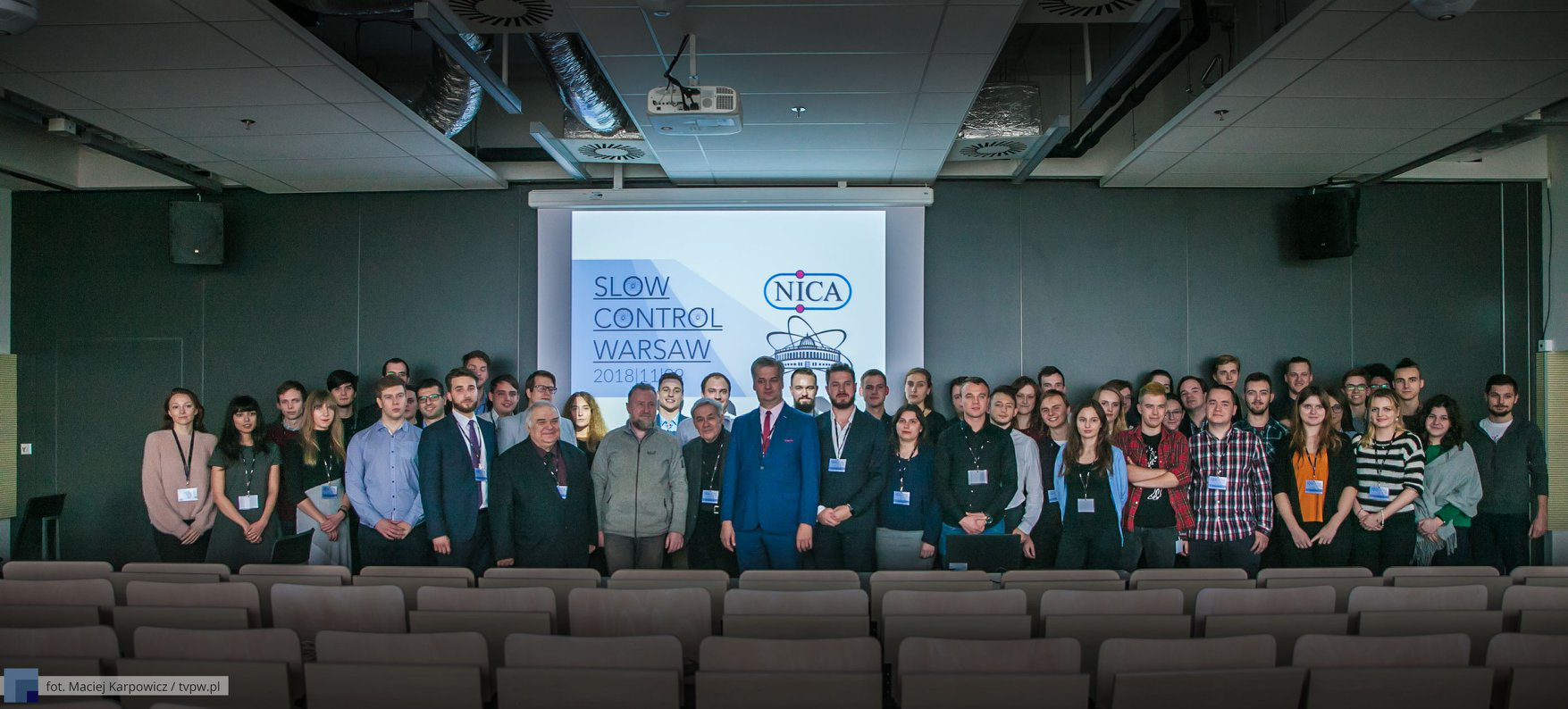Speaker
Description
Reporting the topic of student internship (summer 2018)
Programs:
Master Thesis, Bachelor Thesis, Engineering Work, Summer Students, Slow Control System, TeFeNica.
Project: NICA-MPD (Nuclotron-based Ion Collider fAcility-Multi-Purpose Detector)
Cluster Name: Robots in great physical experiments.
Senior Leader: prof. dr hab. Jan Pluta, pluta@if.pw.edu.pl
Leader: prof. dr hab. inż. Adam Kisiel, kisiel@if.pw.edu.pl
Supervisor: mgr inż. Marek Peryt, Marek.Peryt@pw.edu.pl
Topic:
Balancing Arm Assembly; Measuring Robots for Great Physical Experiments
Engineering and technical tasks:
Overview...
The Measuring Balancing Arm Assembly, is an Project, that demonstrates how control concepts taught in engineering Group can applied. The arm itself is rotated by a servo motor, and balances a ball in a position specified by the user (i.e. set point). The servo is controlled by closed-loop PID Proportional Integral Derivate algorithm implemented in LabView. The feedback data is ball position, which is collected from an infrared IR sensor. If the ball is out of position, the difference between the set point and position data from the IR sensor (i.e. error) will be calculated, and the PID loop will correct it over time.
Base Functionality
• The balance arm is rotated by servo motor, with receives PWM position Data.
• The position of the ball is measured by an infrared IR sensor
• The user specifies a position set point on the front panel of the LabView VI
• The system gradually moves the ball to the position using PID control
• After building the assembly the user must calibrate the arm by indicating the servo position at with the arm is parallel to the ground
• Before every use, the user must also calibrate the controller to recognize the minimum and maximum edges of the arm
• The PID gains are auto-tuned, requiring no input by User
Expansion and Teaching Options
• Learn how the Balance Arm relates to controls concepts like closed - loop stability, disturbances rejection and performance, and PID controller design
• Program the balance arm to alternate between two different position set points.
Job description:
The work is an important part of the NICA-MPD Project, carried out in the international research and development centre JINR Joint Institute for Nuclear Research in Dubna (Russia), Poland has been a member since 1956 and has a significant contribution to its scientific and research achievements.
The work consists in discerning and formulating the needs of a group of specialists from Polish scientific and research institutions, SCS Slow Control System, MPD detector control system and NICA complex. The proposed engineering and technical task combines most of the characteristics of engineering and research work.
Range of tasks to be carried out by the Apprentice:
The Measuring Balancing Arm Assembly model, consisting of prefabricated components and electronic modules, should be designed and developed and programmed in NI LabView. The subject is required to understand the theoretical knowledge and to analyze the topic at the theoretical and practical level. A working prototype (model) is planned. Then, technical analysis of the system and its functionality will be performed. Applications should be used when formulating subsequent technical and functional requirements, the robot's real measuring system. Define the required algorithms and write the software. The apprentice will perform tests and study the work of the finished robot. As a result of the subject matter, a working robot system should be created. At the end, you should give a 15-minute lecture in English about the work done. After the internships (in November 2018) a conference in Warsaw is planned: Slow Control System 2018, in which the Apprentice should take an active part by giving a thematic lecture. The publication of this work is planned.
Note:
It is possible to continue cooperation, for example in the form of an engineering or a master's thesis, as well as further scientific contacts.
Bibliography.
www.jinr.ru
www.ni.com
www.nica.if.pw.edu.pl
The MultiPurpose Detector – MPD to Study Heavy Ion Collisions at NICA; (CDR Conceptual Design Report) Version 1.4; Project leaders: A. N. Sissakian, A. S. Sorin, V. D. Kekelidze.
| Temat: | OK |
|---|




